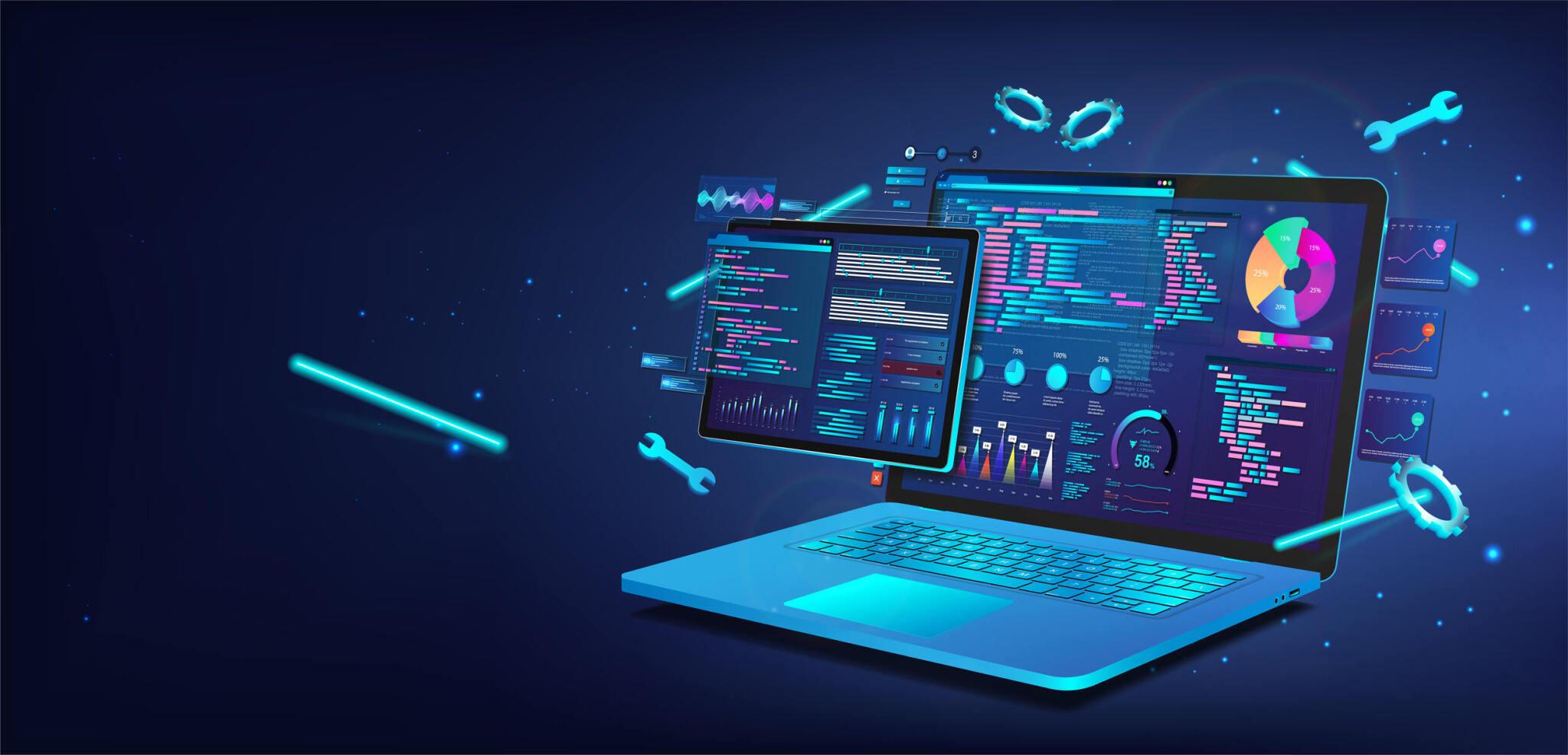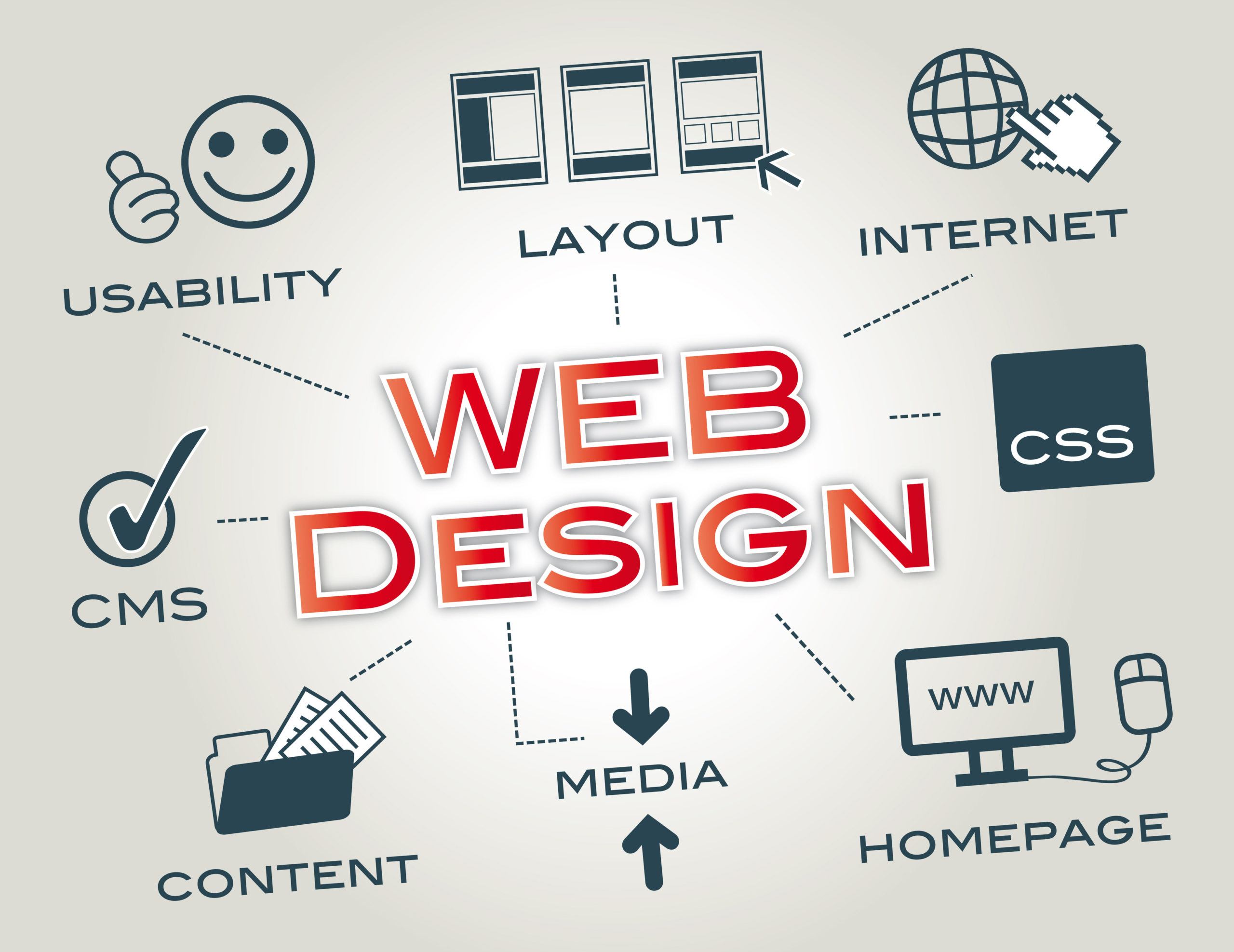15 essential strategies every Website Design Agency uses to create stunning sites
Wiki Article
Discovering Innovative Fads in Web Design for Modern Businesses
The landscape of web design is continuously advancing, mirroring the vibrant requirements of modern-day companies. Recent trends highlight a preference for minimalism, vibrant typography, and interesting interactivity. Companies increasingly prioritize user experience via mobile-first concepts and tailored web content. Furthermore, a concentrate on sustainability is obtaining grip. Comprehending these trends is necessary for businesses intending to stand apart in a crowded marketplace. What effects do these changes hold for the future of electronic involvement?Accepting Strong Typography
Strong typography has actually become a defining element in contemporary web design, capturing interest and conveying messages with striking quality. This fad focuses on aesthetically impactful text that boosts user involvement and brand identification. Designers often utilize oversized fonts and special fonts to produce a pecking order, directing audiences via material perfectly.
The strategic usage of bold typography permits efficient narration, enabling brands to connect their values succinctly. It offers not just aesthetic objectives however likewise useful ones, as it enhances readability across devices and screen dimensions.
As internet sites complete for user attention, vibrant typography stands apart in a saturated electronic landscape. Its flexibility allows developers to explore contrasting designs and shades, better magnifying its effectiveness. Eventually, embracing strong typography represents a shift towards even more communicative and expressive web design, promoting a much deeper link between brand names and their target markets.
The Surge of Minimalist Style
As electronic atmospheres come to be progressively cluttered, the rise of minimalist layout offers a revitalizing option that prioritizes simplicity and performance. This design approach remove unnecessary elements, allowing web content to take spotlight. By concentrating on tidy lines, adequate white area, and a minimal shade combination, minimalist design boosts user experience and improves navigating.Businesses adopting this pattern goal to convey their brand message plainly and effectively, promoting a sense of calmness and clarity. The absence of distractions helps customers concentrate on necessary details, leading to improved engagement and conversion rates. Additionally, minimal style aligns well with mobile-first techniques, making certain that web sites remain easy to use and accessible throughout various devices.
Inevitably, the increase of minimal style reflects a more comprehensive change towards prioritizing user demands and choices, making it a powerful device for modern businesses aiming to make a long lasting influence in the electronic landscape.
Immersive Animations and Interactivity
While numerous web developers embrace minimalist aesthetic appeals, an additional engaging trend gaining grip is making use of immersive computer animations and interactivity. This technique enhances user involvement by developing interesting experiences that draw site visitors right into the content. Developers use dynamic aspects such as computer animated backgrounds, scrolling impacts, and interactive infographics to connect intricate concepts in an obtainable manner.These computer animations not just provide visual passion but also guide users with the navigation procedure, making communications a lot more instinctive. Hover effects and animated shifts can urge customers to explore additionally, leading to enhanced time spent on the site.
Moreover, this trend lines up with the broader movement in the direction of narration in web design, where computer animations function as narrative devices that convey brand messages efficiently. By integrating immersive animations and interactivity, services can distinguish themselves in a congested online landscape, eventually improving user fulfillment and brand name commitment.
Mobile-First Layout Concepts
Mobile-first design principles stress prioritizing user experience by making sure internet sites operate effortlessly on smaller screens. This strategy integrates receptive design strategies that adapt to numerous tool dimensions while preserving aesthetic integrity. Additionally, it concentrates on touchscreen navigation layout, improving usability for mobile customers.Focusing On User Experience
Exactly how can developers efficiently focus on user experience in a significantly mobile-centric world? Highlighting mobile-first design concepts is necessary, as individuals primarily involve with web sites through mobile gadgets. This technique motivates developers to improve web content, guaranteeing it is easily available and navigable on smaller sized displays. Key methods consist of simplifying navigation, reducing load times, and employing touch-friendly aspects that enhance interactivity. Furthermore, prioritizing clear typography and user-friendly designs can significantly enhance user satisfaction. Designers should constantly collect user responses to improve their approaches, adapting to advancing user needs and choices. By concentrating on these components, organizations can develop an engaging electronic experience that cultivates loyalty and drives conversions, inevitably aligning with the assumptions of today's mobile individuals.Receptive Design Strategies
Developers embrace responsive design methods to produce flexible and flexible internet experiences that satisfy numerous screen dimensions. This technique focuses on mobile-first layout concepts, ensuring peak functionality on smaller click to read more sized tools prior to scaling up for bigger screens. By utilizing liquid grids, flexible images, and media queries, designers can keep a natural aesthetic identification across all platforms. This method not only enhances user engagement yet additionally boosts internet search engine positions, as mobile-friendly sites are preferred by search algorithms. Additionally, responsive formats enable organizations to get to a broader target market, suiting individuals on desktop computers, tablet computers, and smart devices alike. Overall, implementing these strategies is important for modern web design, guaranteeing that businesses continue to be competitive in an ever-evolving electronic landscape.Touchscreen Navigating Design
With the increase of smart phones, touchscreen navigation has actually ended up being an essential aspect of web design. Designers are significantly taking on mobile-first concepts to boost user experience and engagement. agency for web design. Efficient touchscreen navigation focuses on larger buttons and instinctive motions, permitting individuals to interact quickly with web content. This approach lowers frustration and motivates expedition, as customers can browse effortlessly with their fingers. Furthermore, integrating swipe gestures and faucet capability accommodates the natural behaviors of mobile individuals. Responses devices, such as visual cues and animations, enhance usability additionally by verifying actions. As touchscreens dominate user interactions, using these design elements not only straightens with contemporary expectations yet additionally fosters a more available and enjoyable surfing experience for all usersIndividualized User Experiences
What makes a user feel truly involved on an internet site? The solution usually exists in customized user experiences. By tailoring content and navigation to individual choices, organizations can develop a purposeful link with their target market. This customization can be accomplished through different techniques, such as evaluating user behavior, utilizing cookies, and providing personalized recommendations based on previous communications.As an example, e-commerce systems that recommend items based on surfing history not only boost user experience however additionally raise conversion prices. In addition, including vibrant material that adjusts to the user's location or time of day can even more enrich involvement.
Furthermore, customized greetings or messages can make customers feel valued and recognized. As modern companies venture to stick out in a competitive electronic landscape, welcoming individualized user experiences becomes essential, cultivating loyalty and encouraging repeat gos to. Inevitably, this technique changes a typical web site into an interactive system that reverberates with its audience.
Sustainability in Web Design
As the digital landscape remains to evolve, the relevance of sustainability in web design has actually obtained considerable focus. Designers are increasingly knowledgeable Learn More Here about the ecological effect their creations can have, motivating a shift in the direction of green practices (Web Design services). Lasting web design concentrates on maximizing websites to lower energy intake and carbon impacts. Methods consist of using minimalistic style concepts, enhancing images, and employing effective coding techniques to improve loading ratesThe selection of hosting suppliers plays a necessary function; numerous designers are now opting for green hosting services powered by eco-friendly energy. By prioritizing accessibility and user-friendly navigation, lasting designs additionally satisfy a broader audience, improving usability. This conscious strategy not just attract environmentally-minded consumers yet also adds to the general longevity and effectiveness of websites. Eventually, sustainability in web design mirrors an expanding fad in the direction of liable digital methods that line up with modern-day company values.

Regularly Asked Questions
Exactly How Can I Choose the Right Color Pattern for My Website?
To choose the ideal shade scheme for a site, one ought to take into consideration the brand's identity, target audience, and psychological effect. Using shade theory and testing mixes can boost user experience and aesthetic appeal substantially.What Are the very best Tools for Prototyping Website Design?
The most effective devices for prototyping website design consist of Figma, Sketch, Adobe XD, and InVision. These systems use intuitive user interfaces, collaboration attributes, and comprehensive collections, making them optimal for designers to create and fine-tune their ideas properly.Just how Do I Gauge the Performance of My Web Design?
To measure web design efficiency, one ought to assess user involvement metrics, conversion prices, and functionality feedback (Web Design services). A/B testing and heatmaps can also offer insights into user actions, leading required changes for enhanced efficiency and user experienceWhat Prevail Web Design Blunders to Stay Clear Of?
Common web design mistakes include cluttered designs, bad navigation, sluggish filling times, lack of mobile optimization, inadequate contrast, and disregarding user comments. Preventing these mistakes enhances user experience and raises home general effectiveness of the site.How Commonly Should I Update My Website Design?
A website style need to be upgraded every two to 3 years, or faster if substantial changes in branding or innovation occur. Normal updates keep the site fresh, functional, and aligned with present user expectations.
Report this wiki page